We are back with more kitchen tips to help you feel more confident in the kitchen. Today, we are discussing another foundation of flavor: how to use cooking aromatics. Join us and learn what they are, how to use them to create your desired flavor, and how to freeze them to save time in the kitchen.
What Are Cooking Aromatics?
When you think about how to add more flavor to a recipe, do you automatically head to your spice cabinet? While spices and herbs play an important role in the flavor profile of the finished dish, the true essence of flavor comes from much more modest members of the pantry. Cooking aromatics are a seemingly humble group of vegetables, but any good cook is never without them. While they typically disappear into the background of a finished sauce, soup, curry, stir-fry, or roast, you would be seriously notice their absence. In fact, if you have been freezer cooking with us for any amount of time, you will probably recognize these veggies from your chopping list!
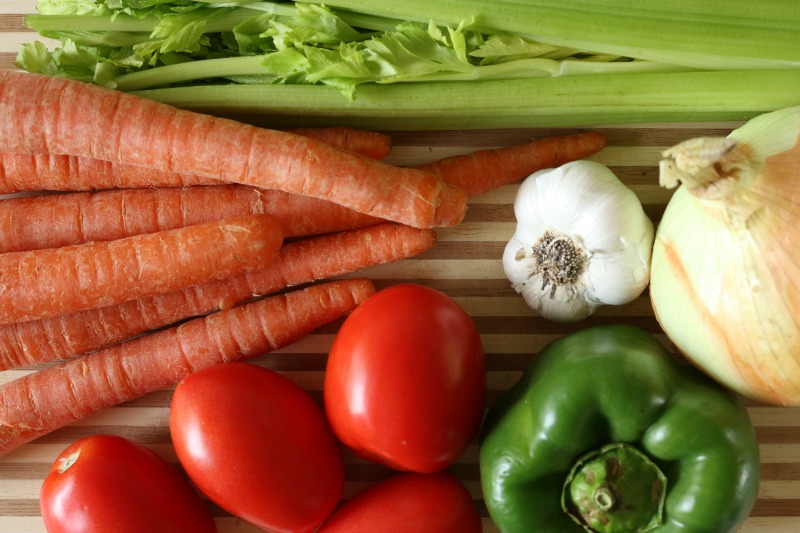
Common Cooking Aromatics Include:
- Onions (and other members of the onion family such as scallions, shallots, and leeks)
- Garlic
- Celery
- Carrots
- Peppers (both sweet and hot)
- Tomato
- Ginger
- Various herbs and spices are often added depending on cuisine
Aromatics can be added whole to broths and other dishes where they will add flavor and then be removed. But often they are diced and sauteed in butter, oil, or animal fats to release all of the flavor and the heavenly perfume locked within these humble recipe starters. Many times I will just be getting started with a recipe. The only thing in the pan is a little oil or butter and a few aromatics, and my husband will call down, “Smells good, honey, what are you making?” I truly believe that there aren’t a whole lot of things in this world that smell more intoxicating than onions and peppers sauteing in butter or bacon fat. They may never be the star of the show in a finished dish, but you certainly can’t cook without them.
Use Cooking Aromatics to Develop Classic Flavors
Each region has its own signature mix of aromatics that helps to develop the base for the classic flavors of that cuisine. So you will choose different assortments of aromatics depending on the dish or cuisine you have chosen. None of these is an exact recipe. Every veteran cook has their own mix and ratio, and there are several ingredients that you will often see added to each mix. You can even blend two of these mixes to create a new ethnic fusion dish. Learn the rules, and then learn how to break them creatively. With a little practice, choosing aromatics will become instinctive.
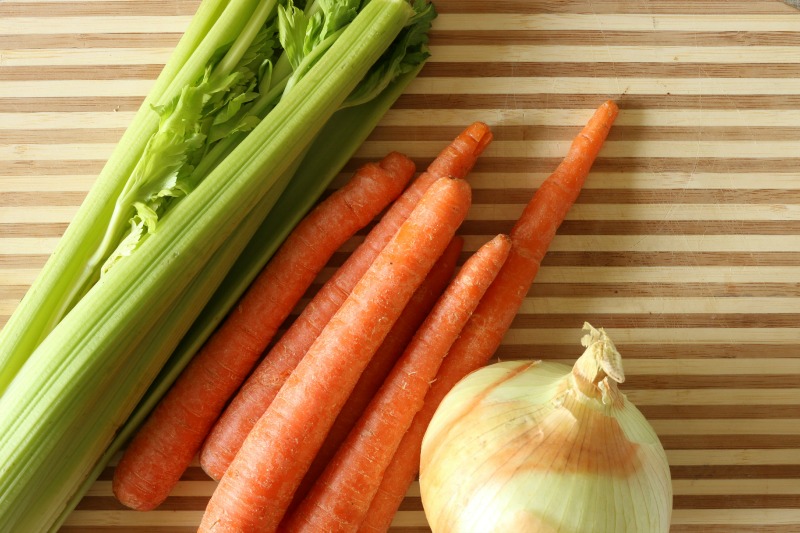
French Mirepoix
This is one of the most often used aromatic mixtures. Broths, soups, roasts, and more – they pop up everywhere, but they hail from France. Typically, mirepoix veggies are sauteed in butter at the start of a recipe.
- onions
- carrots
- celery
- optional: parsley, thyme, herbs de Provence, bay leaf
Recipes: Homemade Chicken Stock, Soup Mini Menu February 2014, One Skillet Paleo Dinner
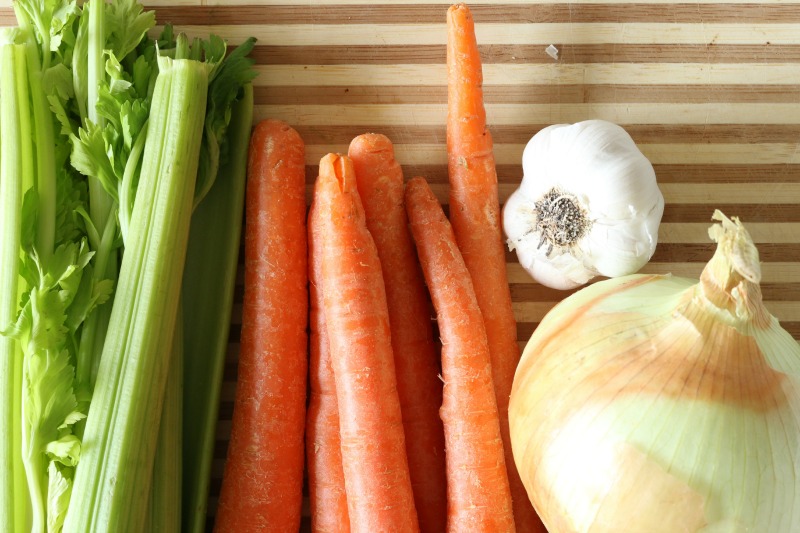
Italian Battuto/Soffritto
Here is another classic cuisine from the Old World, and it is quite similar to the first. The difference comes in the fat. Italian cooks are more likely to use olive oil or include animal fat such as the renderings from prosciutto or pancetta. You will also notice the option of adding garlic and classic Italian herbs and spices.
- onions
- carrots
- celery
- optional: garlic, sage, fennel, parsley
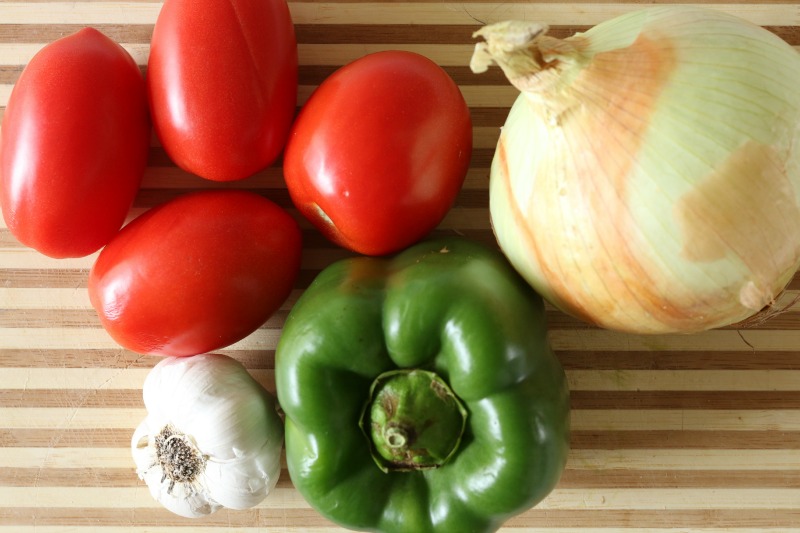
Spanish and Latin Sofrito
In its early history, Spain’s sofrito probably looked much like Italian soffritto or mirepoix. But their cuisine adapted and changed as they discovered new fruits in the New World: tomatoes and bell peppers. As a result, their classic veggie mixture is a mix between the Old and the New (see the next entry for classic new world flavors!) Their daughter countries each have their own unique infusions based on the local produce and spice offerings, but the basis is the same.
- onions
- garlic
- green bell pepper
- tomato
- optional: chiles, corriander, cumin, cilantro, sausage or ham
Recipes: Carribean Cruise Mini Menu
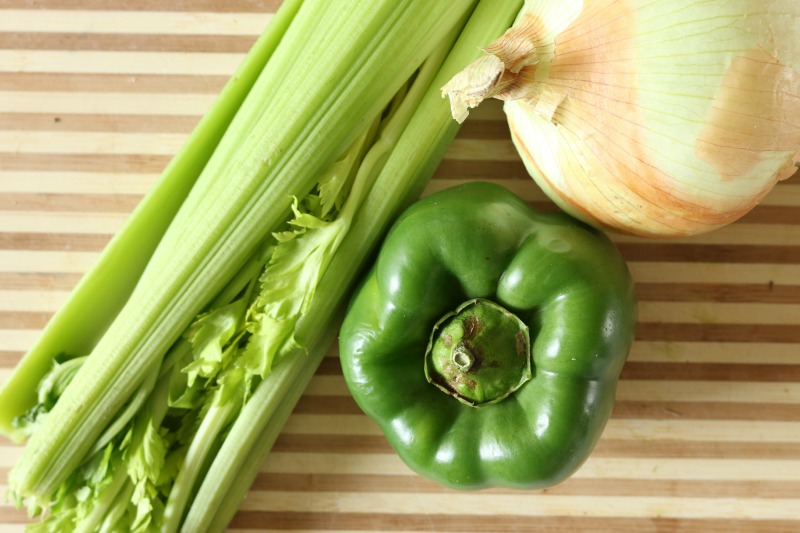
American Holy Trinity
Classic cooks arrived in the New World and discovered new crops and new flavors. One of the distinct regional cuisines in the New World derives from old French roots: Cajun. The Holy Trinity was born deep in the South, but has broad applications in many American dishes. For the fat, you will see cooking oil, butter, or sometimes both. In many cases, a roux is created atop these simmering veggies in dishes such as gumbo.
- onions
- celery
- green bell pepper
- optional: garlic, shallots, parsley, paprika
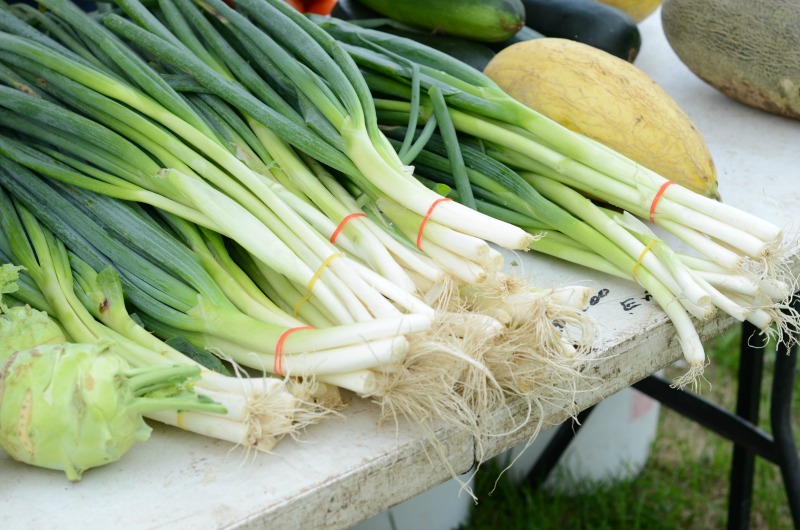
Asian Aromatics
Asian food has hit the world stage, and restaurant chefs as well as home cooks want to recreate these centuries old flavors as accurately as they do the Western classics. Like the mixes above, there are similarities, but each region has its own unique aromatics as you can easily tell by catching the fantastic scents when walking past your favorite restaurant. Here are a few favorite mixes:
- Chinese: garlic, green onions, ginger, and cooking oil (optional: chiles, chives, cilantro, Chinese five spice)
- Indian: onions, garlic, ginger, chiles, and clarified butter (optional: tomatoes, cardamom, cumin, curry)
- Thai: onions or shallots, garlic, chiles, cooking oil, coconut milk (optional: galangal, kaffir lime, lemongrass)
Recipes: Sweet and Spicy Garlic Chile Sauce, Whole Foods Thai Curry, Steak and Winter Vegetable Stir Fry, Thailand Mini Menu
For more info about these mixtures (and those from other cuisines) and all of their uses and variations, see this post from Serious Eats. If you are more of a visual person, Cook Smarts has some great pinnable and printable charts for the different veggie bases.
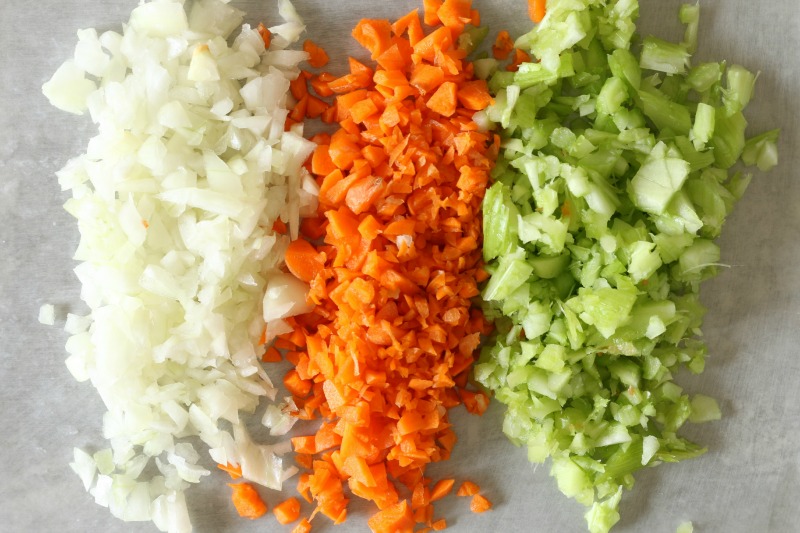
Freeze Cooking Aromatics for Easy Use
Most often, we are freezing full meals at OAMM. But that is not the only way to freezer cook. Even though I LOVE having the ability to pull out freezer meals on a busy night or prep ahead when I’m having company, I also like to cook. If you like to cook, and want to improve your skills, but you also want to save time, you can do so by making up bags of these basic aromatic mixtures ahead of time. Simply pull them out when you are ready to cook!
With most veggies, the easiest way to freeze them is to flash freeze, meaning you will lay chopped veggies out in a single layer on a rimmed baking sheet lined with parchment paper and place in the freezer until they are firm. Once they are firm, remove to a small freezer bag (pint or quart based on your needs), label, and lay them flat in the freezer (this helps maximize freezer space!) Since they are frozen before you put them in the bag, they won’t freeze all together in a clump. When you’re ready to cook, you can simply pull them out and throw them in the pan – no need to even thaw!
This can also be a great way to save money. If you see a good sale on these produce items or find a steal at the farmer’s market, you can stock up and freeze them without worrying that they will be wasted. Ever wonder what to do with that extra half of an onion, carrot, pepper, etc? Or do you occasionally end up with extra chopped veggies on your cooking day? Go ahead and freeze them in small portions, pre-chopped, and ready to go for a quick stir fry, soup, or any recipe that calls for those veggies. Prepping and freezing veggies ahead of time can save time and money without sacrificing fantastic flavor!
1 Comment
Join the discussionThanks for this article! I loved reading about the different locations and how the use of aromatics developed/varied. Please be careful with therms like “daughter country”, though. These countries existed with their own culture and food traditions before Europeans decided they were the “new” world. Thanks again!